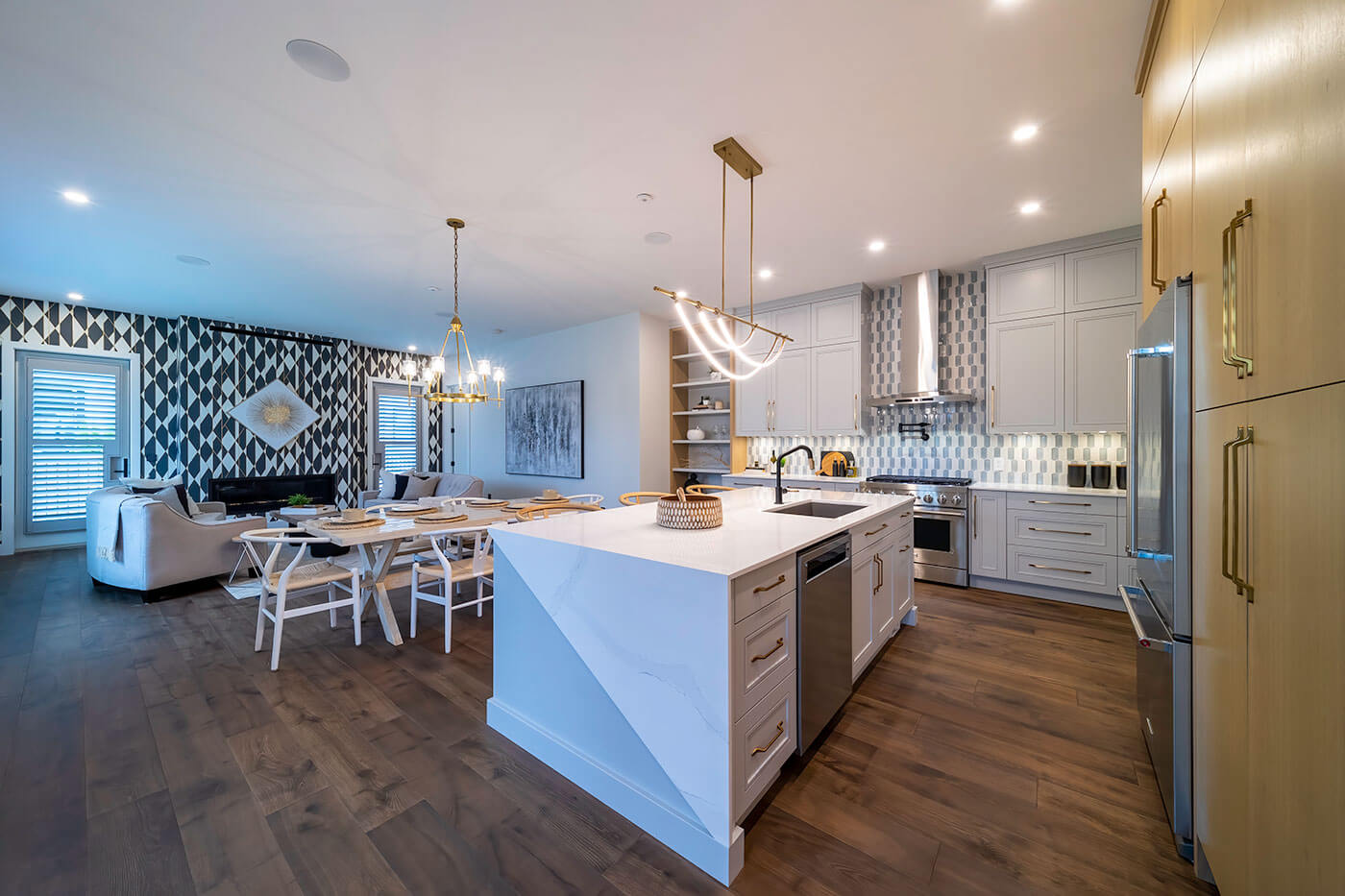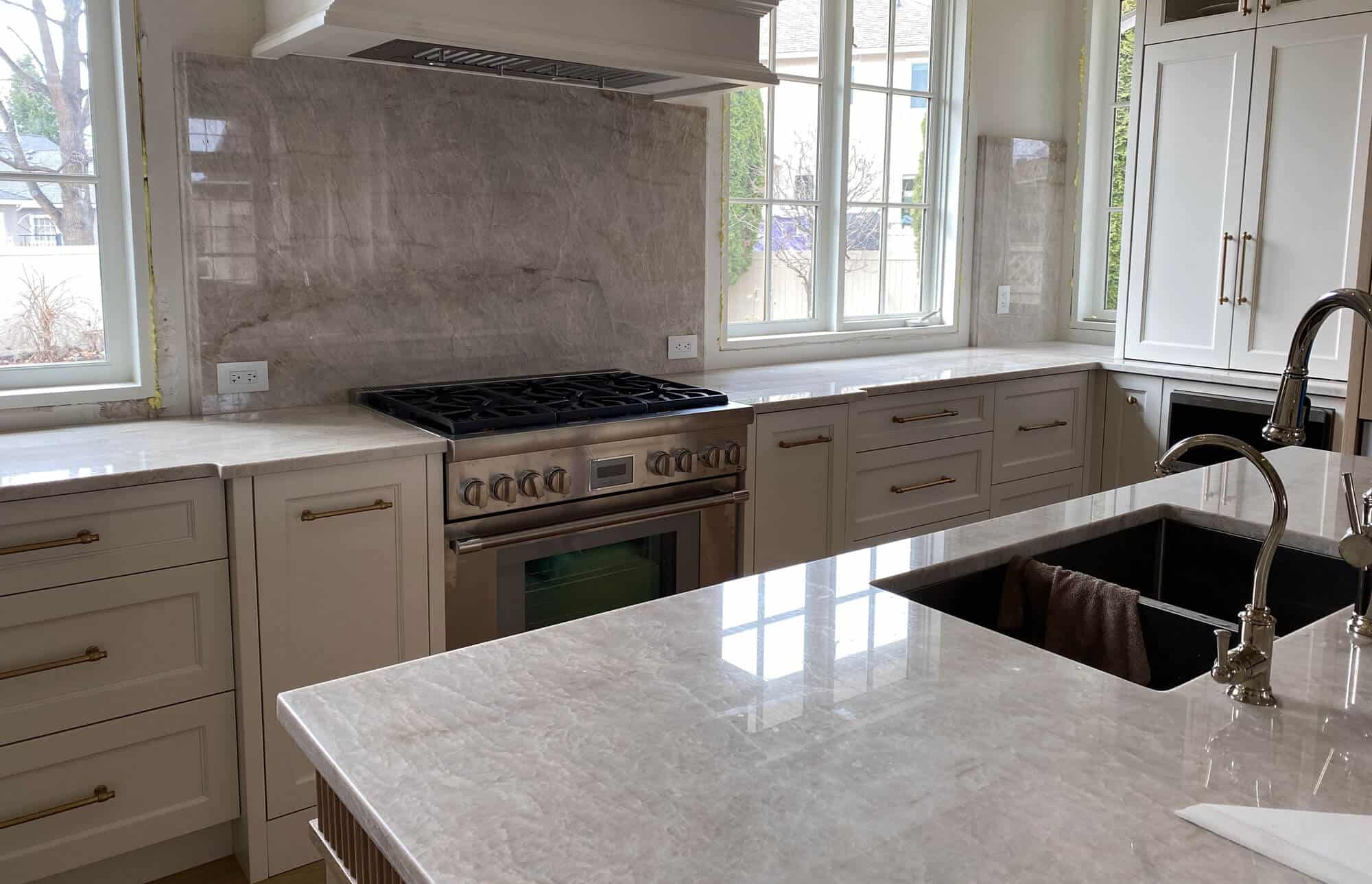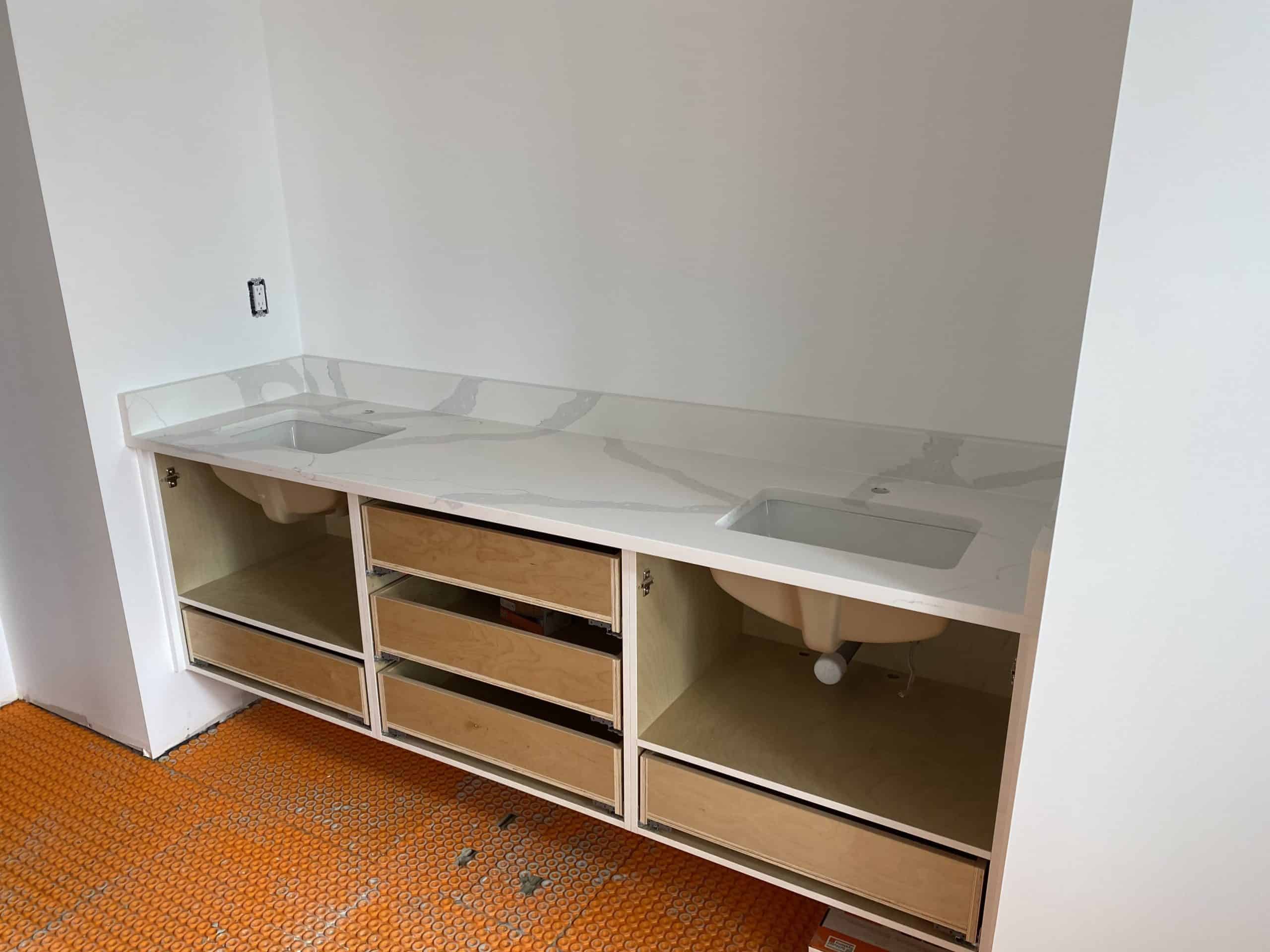
Natural Quartzite: What Every Designer Should Know
Quartzite has surged in popularity among interior designers seeking a “marble upgrade” that delivers both visual impact and long-term durability. Yet behind its stunning veining lies a set of challenges that, if overlooked, can lead to frustrated clients and costly callbacks. At Landmark Countertops, we believe in full transparency. Here’s what every designer should understand before specifying quartzite for their next project.
The Myth vs. The Reality
Although natural quartzite forms when sandstone transforms under intense heat and pressure—yielding a beautifully crystalline, hard surface—not all slabs perform equally. In today’s marketplace, “quartzite” can refer to:
- True natural quartzite from vetted quarries, with consistent mineral composition.
- Dolomitic marble look-alikes that scratch and etch like marble.
- Mixed-stone blends falsely marketed as premium quartzite.
Without due diligence, clients may assume they’re getting a maintenance-free surface, only to encounter persistent staining, etching, and uneven wear.
Five Quartzite Pitfalls to Watch For
1. Staining That Won’t Quit
Many quartzites absorb spills quickly. Even routine sealing can’t always block red wine, cooking oils, or citrus juices. Once a stain sets in, extraction may be impossible.
2. Mislabeled Materials
“Quartzite” is not a regulated label. Softer dolomitic marbles or reconstituted mixes often carry the name, yet they lack the durability of true natural quartzite, leading to unexpected etching and scratching.
3. More Maintenance Than Advertised
Quartzite is often billed as low-maintenance, but many slabs require annual (or biannual) resealing. Without it, moisture and oils can penetrate the surface, causing dark spots and dullness.
4. Fabrication and Installation Hurdles
Its hardness resists wear—but also wears down cutting blades. Fabricators may face higher labor costs and increased risk of chipping if slabs aren’t handled with care.
5. Etching from Acids
While harder than marble, quartzite is not impervious. Acidic substances like lemon juice or vinegar can still etch the surface, leaving a cloudy finish.
How to Specify Natural Quartzite with Confidence
Source Wisely
Partner with suppliers who guarantee genuine quartzite and provide batch certifications.
Inspect and Test
Review full-slab samples under showroom lighting and perform quick spill tests—using water, oil, and vinegar—to gauge absorption.
Educate Clients
Set realistic expectations about sealing frequency and daily care. A simple, illustrated care guide can go a long way.
Offer Alternatives
If ultra-low maintenance is a must, suggest high-performance porcelain or engineered quartz that mimics the look of natural quartzite with less upkeep.
Why Landmark Countertops Delivers Peace of Mind
At Landmark Countertops, we manage every step in-house—from material sourcing and slab testing to expert fabrication and installation. When you choose us, you benefit from:
Curated Quartzite Collection
Every slab of natural quartzite is pre-qualified for porosity, finish, and color consistency.
On-Site Testing
We conduct absorption and etching trials so you can assess real-world performance before you specify.
Expert Fabrication
Our CNC-assisted workshop handles even the hardest quartzite cleanly and precisely, minimizing waste and edge chipping.
Visit Our Showroom
Seeing is believing. Explore our full natural quartzite lineup—alongside porcelain, engineered stone, and other natural surfaces—at our Kelowna showroom. Drop in anytime or schedule a private consultation with our team. We’ll help you select the right slab, understand care requirements, and specify with complete confidence.






